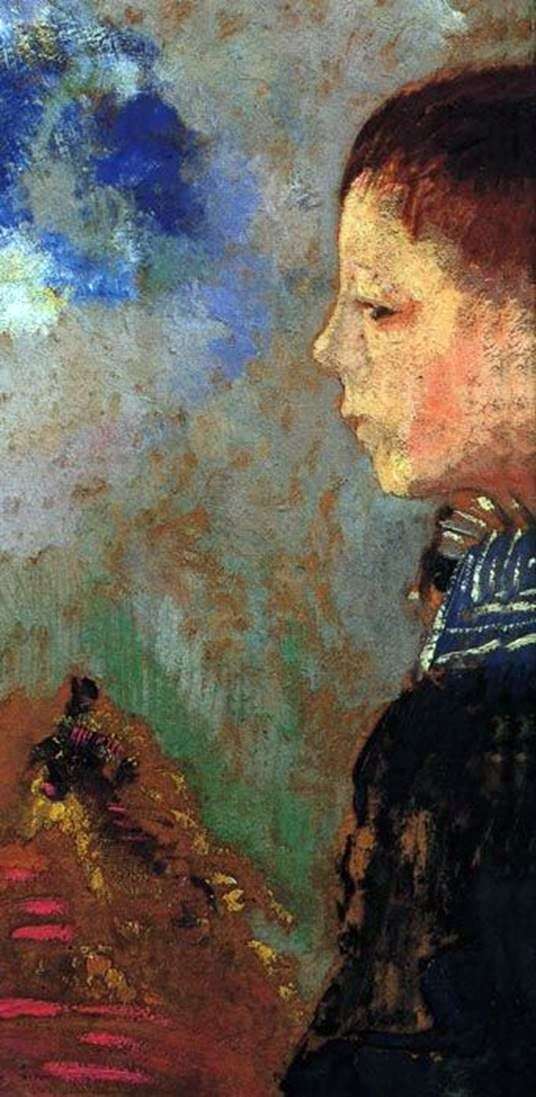
Redon really became interested in the portrait genre, having only entered into the mature period of his work, although in early youth he did not despise it at all, saying that portrait is the “highest genre demanding enormous skill from the artist.”
Working on portraits, Redon sought to convey in them not only and not so much the notorious “portrait likeness”, as the inner world of models. This is probably why he usually wrote people who were well acquainted with him. Most often, his wife and son posed for him. However, later, when the artist’s fame was consolidated, he had the opportunity to write custom portraits too. He took on this job without much pleasure, and yet almost never rejected incoming orders, because they brought good money.
The first customized portrait of Redon was the portrait of Countess de Larochefoucauld, written in 1896. But, of course, it was much more pleasant for the master to portray close people. There are quite a few portraits of Ari, the artist’s son, where Redon boldly experimented with color and composition. For example, in the “Portrait of Ari with a blue collar,” the artist not only depicts a boy in profile, but also places his figure in such a way that it takes up less than half of the picture.
Subsequently, Redon wrote people in profile and on custom portraits, believing that he follows the tradition of the early Renaissance. In addition, he always tried to make the background on which the face of the person portrayed was written respond to the warehouse of his soul. For example, in the “Portrait of Paul Gauguin”, 1903-05, the mysterious face of the artist is framed with fancy colors. Note that this portrait of Redon was painted after Gauguin’s death, and he painted his face in a light haze – as if it was shrouded in mist. So Redon probably wanted to emphasize that Gauguin no longer belongs to this world.
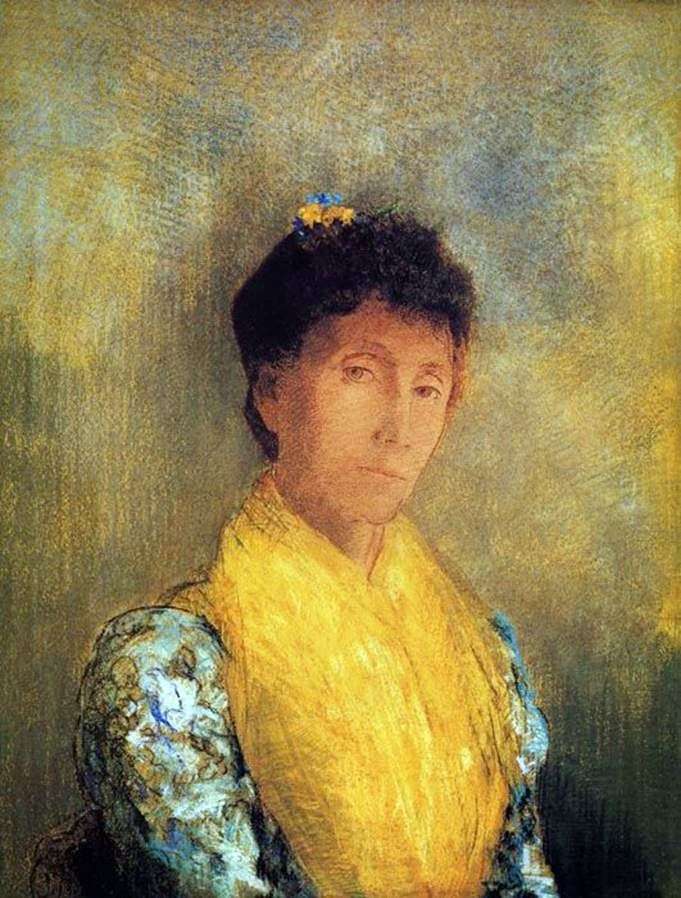 Woman in Yellow by Odilon Redon
Woman in Yellow by Odilon Redon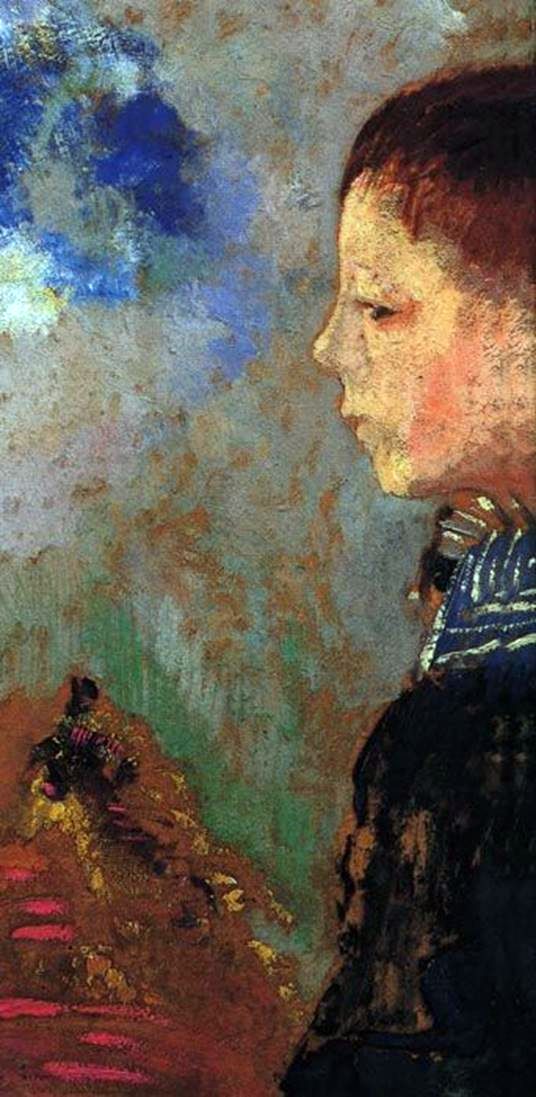 Portrait d’Ari au col bleu – Odilon Redon
Portrait d’Ari au col bleu – Odilon Redon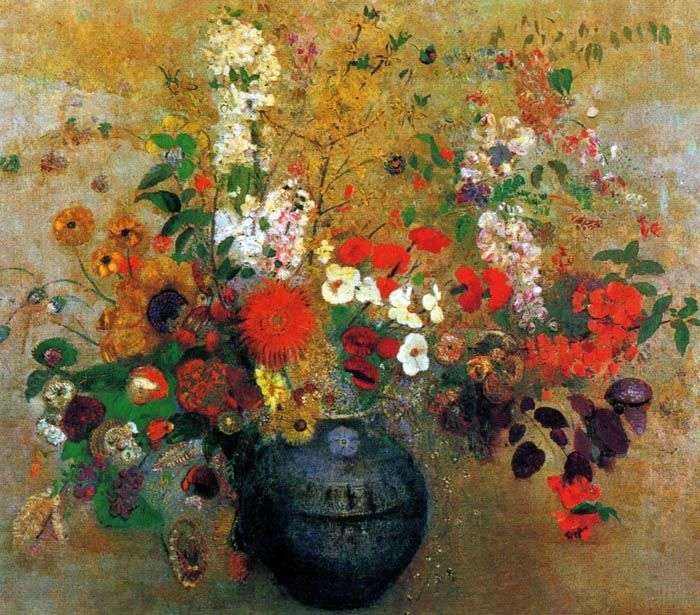 Flower Bouquet by Odilon Redon
Flower Bouquet by Odilon Redon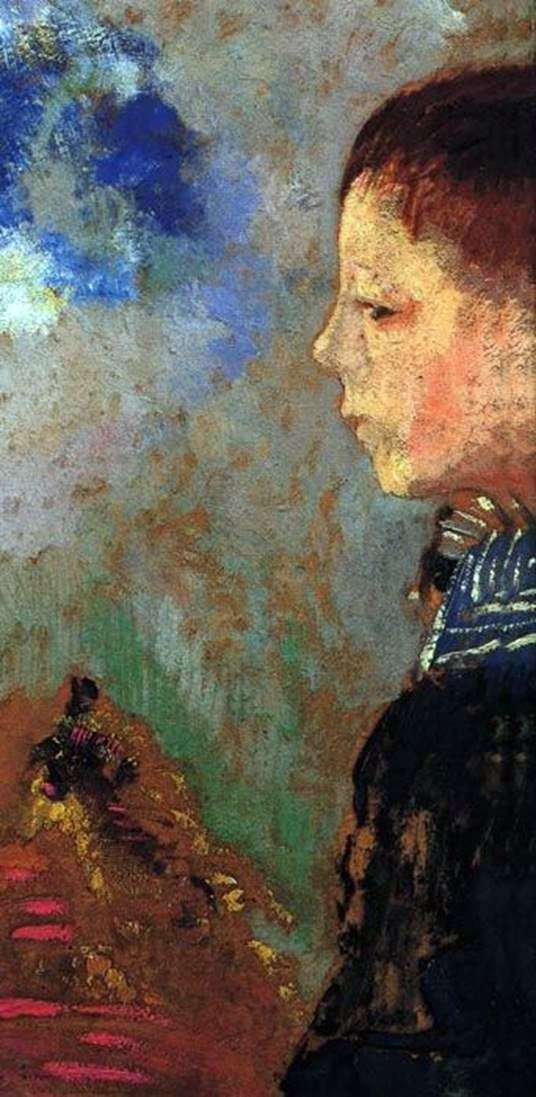 Retrato de Ari con un collar azul – Odilon Redon
Retrato de Ari con un collar azul – Odilon Redon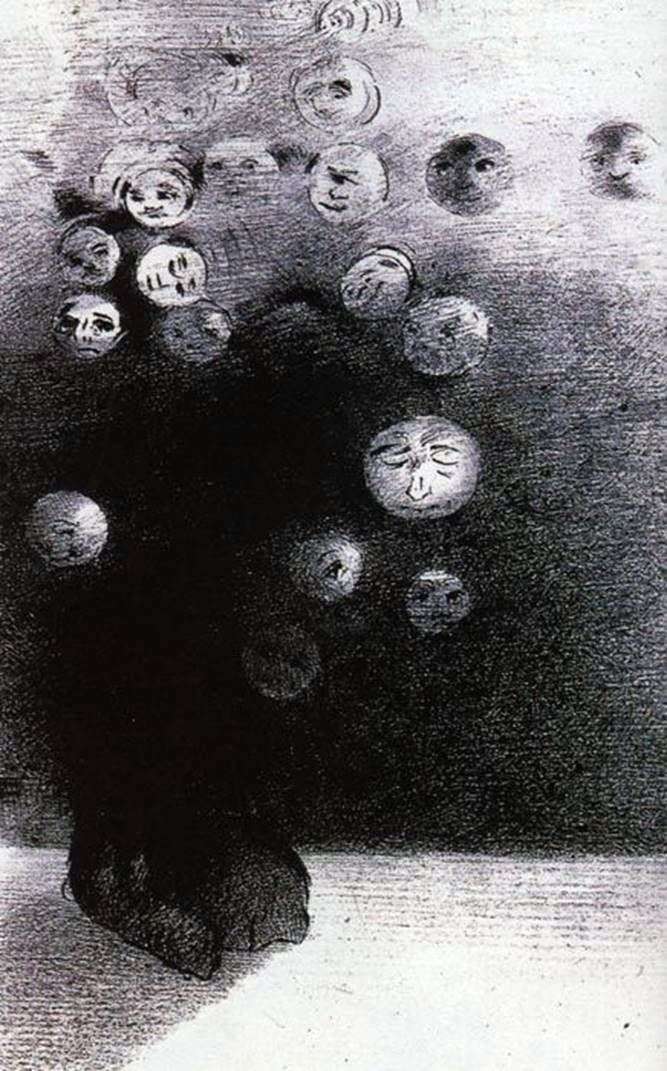 Lithographs by Odilon Redon
Lithographs by Odilon Redon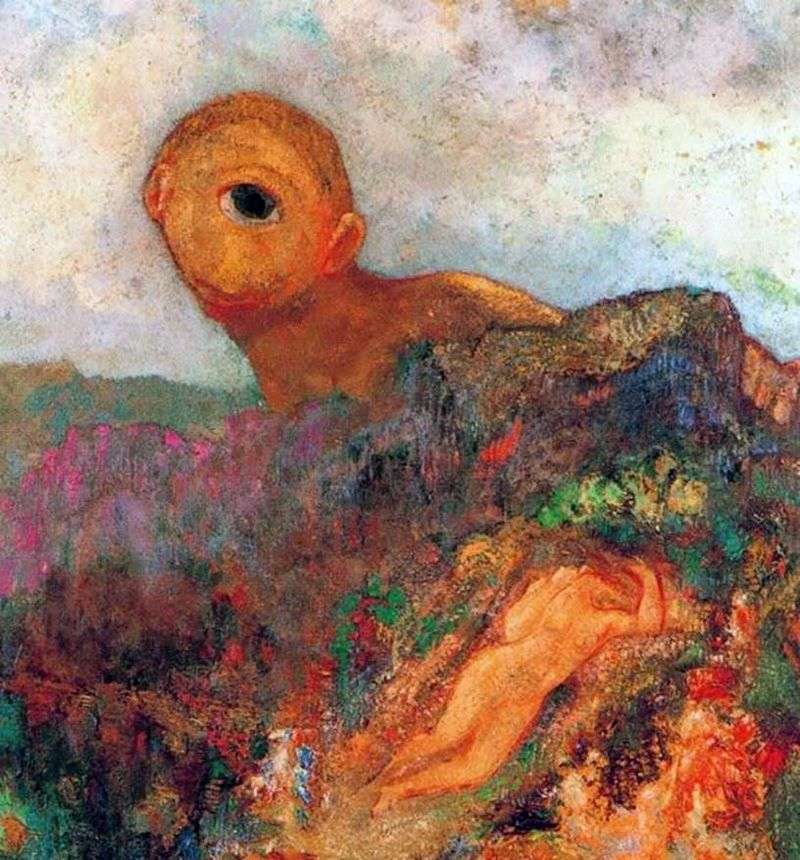 Cyclops by Odilon Redon
Cyclops by Odilon Redon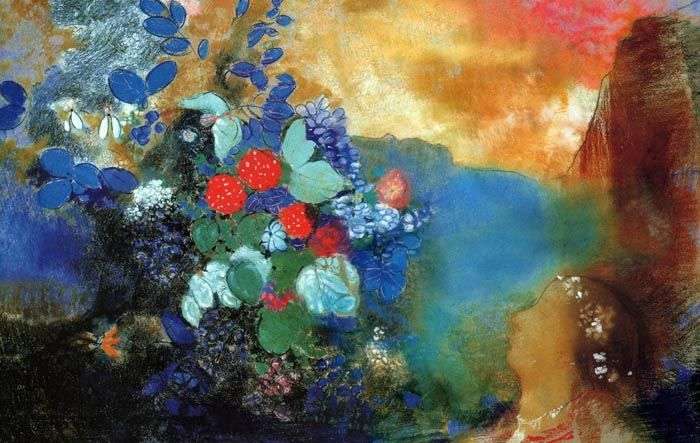 Ophelia among the flowers by Odilon Redon
Ophelia among the flowers by Odilon Redon With eyes closed by Odilon Redon
With eyes closed by Odilon Redon